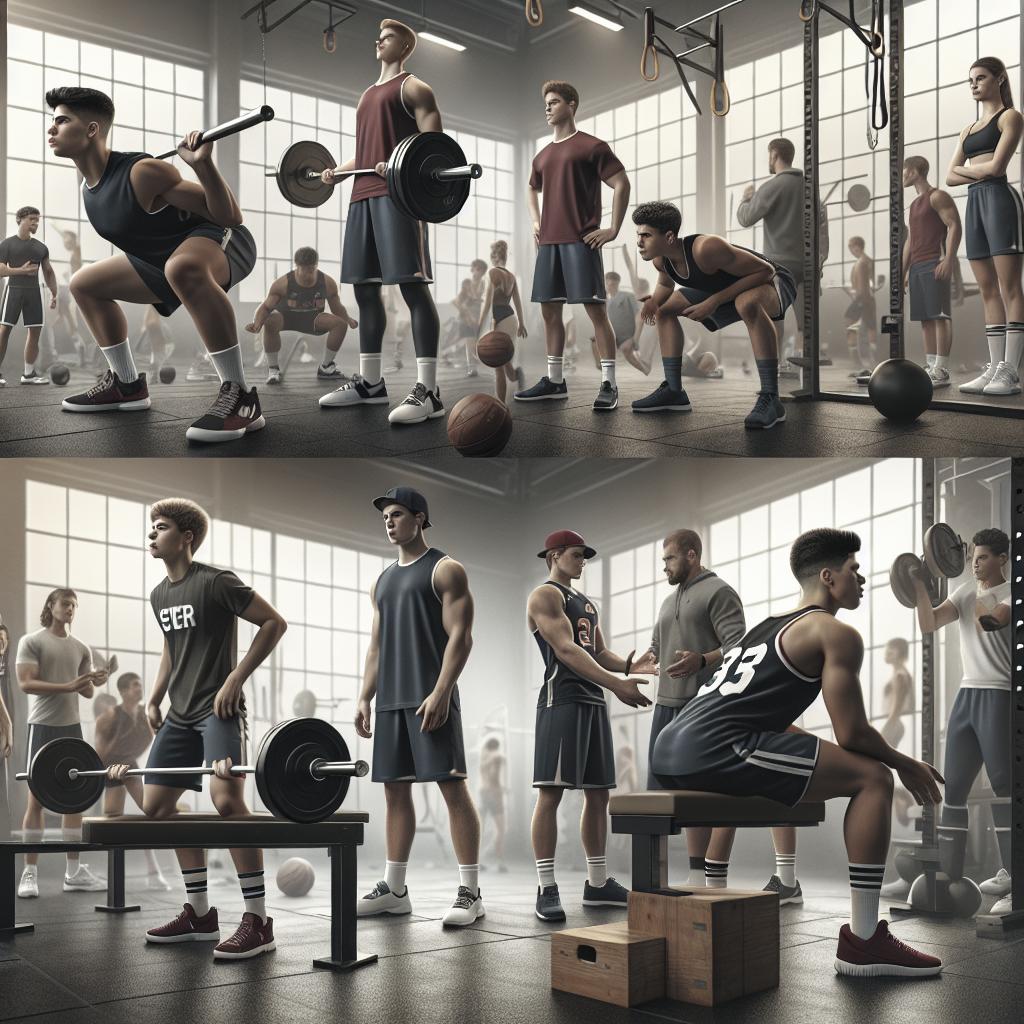< lang="en">
Strength training is crucial for high school athletes looking to enhance their performance and reduce the risk of injury. In this article, we’ll delve into essential tips and strategies that can help these young athletes optimize their strength training routine. From the importance of exercise performance over sport performance to the value of working closely with coaches and parents, we’ll cover a range of topics that are integral to the development of high school athletes. This guide will also discuss advanced concepts such as periodization and the logistical challenges that can impact training. So, grab your notepad and get ready to elevate your training game!
Are You Not Entertained?
Building strength isn’t just about lifting heavy weights; it’s about making the process enjoyable and engaging for young athletes. High school athletes are more likely to stick to their strength training routines when the workouts are fun and varied. Incorporate elements of competition, like friendly challenges or mini-tournaments, to keep the motivation high.
Utilizing a variety of equipment and exercises can also stave off boredom. Alternate between free weights, resistance bands, and bodyweight exercises to keep things interesting. A well-balanced workout plan that is both entertaining and challenging can lead to better adherence and long-term success.
Exercise Performance Over Sport Performance
While the ultimate goal for most high school athletes is to excel in their chosen sport, it’s essential to focus on exercise performance during strength training sessions. Proper technique not only maximizes the benefits of each exercise but also minimizes the risk of injury, which is paramount for young athletes.
Emphasizing exercise performance helps in building a solid foundation of strength and conditioning. This foundation will subsequently translate into improved sport performance. Coaches should monitor form closely, provide corrective feedback, and encourage athletes to prioritize quality over quantity.
Be Like Dave Ramsey
Dave Ramsey, known for his financial advice, advocates for consistency and smart planning. The same principles can be applied to strength training for high school athletes. Consistency is crucial for making progress, and missing workouts can lead to stagnation or regression.
A well-thought-out training plan, much like a good financial plan, should include short-term goals (weekly targets) and long-term objectives (seasonal or yearly goals). Consistently following this plan leads to gradual and sustained improvements in strength and overall performance.
Every Day Is an Evaluation
Each training session should be treated as an opportunity for evaluation. Athletes and coaches need to assess not just the physical performance but also the mental and emotional aspects of training. Keeping a detailed training log can facilitate this evaluation process, recording progress, challenges, and overall well-being.
Regular evaluations can help identify patterns or issues that need to be addressed. Whether it’s a recurring injury, lack of motivation, or a plateau in performance, early identification and intervention can prevent these issues from becoming major setbacks.
Linear Periodization Is Not Dead
Linear periodization, which involves gradually increasing the intensity of workouts over time, remains a valuable strategy for high school athletes. This method ensures a steady progression of strength and conditioning without overwhelming young athletes’ developing bodies.
By systematically cycling through phases of preparation, peak, and recovery, athletes can avoid burnout and injuries. Linear periodization provides a structured approach that balances intensity and rest, making it an effective strategy for sustained athletic development.
Logistics Can Hurt
Several logistical factors can influence the effectiveness of a strength training program. Limited access to training facilities, time constraints due to academic commitments, and varying levels of parental support can all pose significant challenges.
Coaches and athletes need to be creative and flexible in overcoming these obstacles. Home workouts, shorter yet effective training sessions, and clear communication with parents and school staff can help mitigate some of these logistical issues, ensuring that athletes can maintain consistent training.
Working with Coaches and Parents
The success of a high school athlete’s strength training program often hinges on effective collaboration between the athlete, coaches, and parents. Coaches need to educate parents about the importance and safety of strength training, dispelling any myths and concerns they might have.
Establishing open lines of communication ensures that everyone is on the same page regarding the athlete’s goals, progress, and any adjustments needed. This collaborative approach fosters a supportive environment that can help young athletes thrive both in and out of their respective sports.
Don’t Worry – The Kids Are Alright
While it’s natural to be concerned about the well-being of young athletes, it’s important to remember that most teenagers are resilient and adaptable. With proper guidance, they can handle the challenges associated with strength training and reap significant benefits.
Encouraging a positive attitude towards training, coupled with adequate rest and recovery, ensures that these athletes are set up for success. Emphasizing the joy of sport, rather than its pressure, can help cultivate a lifelong love for physical fitness and athletic pursuits.
Future Prospects
| Topic | Key Points |
|---|---|
| Are You Not Entertained? | Incorporate fun and varied workouts to maintain engagement. |
| Exercise Performance Over Sport Performance | Prioritize proper technique to maximize benefits and minimize injuries. |
| Be Like Dave Ramsey | Consistency and smart planning lead to sustained progress. |
| Every Day Is an Evaluation | Use daily training sessions for continual assessment and improvement. |
| Linear Periodization Is Not Dead | Gradual progression through structured phases supports long-term development. |
| Logistics Can Hurt | Adapt to challenges by being flexible and creative with training plans. |
| Working with Coaches and Parents | Effective collaboration ensures a supportive training environment. |
| Don’t Worry – The Kids Are Alright | Encourage resilience and a positive attitude towards training. |


